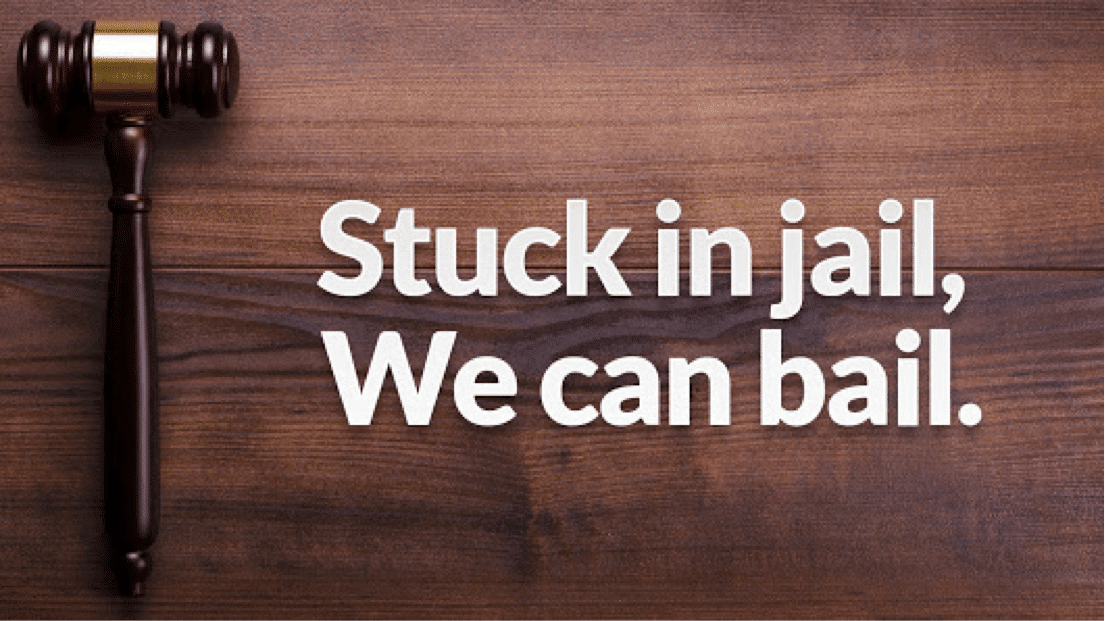Find Bail Bonds Near Me Canton Ohio: 24/7 Local Bail Bond Assistance
Wiki Article
Understanding How a Bail Bond Works and Its Influence On the Legal Process
The concept of a bail bond functions as a critical device within the lawful process, enabling accuseds a pathway to protect their launch while waiting for test. By comprehending the ins and outs of this procedure, including the roles of bondsman and the monetary implications, one can appreciate exactly how access to bail significantly affects legal outcomes. Nonetheless, disparities in bail price raise pressing inquiries regarding systemic inequalities and their broader societal influence. What effects emerge when the capability to pay determines one's liberty? Exploring these measurements unveils a complicated interaction deserving of additional examination.What Is a Bail Bond?
A bail bond is a legitimately binding agreement that acts as an economic guarantee for the launch of an implicated person from jail while they await test. This mechanism permits accuseds to safeguard their temporary flexibility by giving a monetary assurance to the court that they will certainly stand for all set up hearings - bail bond company canton ohio. The bond amount is normally established by a judge based on elements such as the extent of the crime, the defendant's criminal history, and the risk of flightbail bonds can be published by the offender or through a Bail bondsman, who charges a non-refundable fee, normally a portion of the complete bail quantity, for thinking the monetary danger. If the accused stops working to show up in court, the bail bond comes to be waived, and the court might release a warrant for the person's apprehension. In such cases, the bail bondsman is usually tasked with situating and apprehending the defendant to mitigate their financial loss.
Basically, bail bonds serve an essential role in the judicial system by balancing the assumption of virtue with the demand to make certain court looks, therefore assisting in the defendant's right to prepare for their case beyond imprisonment.
:max_bytes(150000):strip_icc()/bail-bond.asp_final-a917e77f41454665b139f84f89be9129.png)
The bail Refine Explained
Navigating the bail process can frequently feel overwhelming for those unknown with the lawful system. The bail procedure commonly starts after a person is jailed and scheduled. At this factor, a court will certainly determine the bail amount, which is intended to ensure the defendant's appearance at future court dates. Factors affecting this choice include the nature of the supposed criminal offense, the accused's criminal history, and their ties to the community.Once the bail quantity is set, the defendant or their rep can pick to pay the total in cash, arrange for a bail bond, or demand a Bail hearing for a prospective reduction. If a bail bond is selected, a licensed bondsman normally charges a non-refundable fee, typically around 10% of the complete bail quantity, in exchange for assuring the court that the accused will show up for all needed procedures.
Upon payment, the bondsman will upload the bail with the court, safeguarding the defendant's launch. It is vital for the defendant to stick to all court dates; failing to do so can cause the forfeit of the bail and added legal consequences.
Kinds Of bail Bonds
bail bonds been available in numerous types, each created to meet various needs and conditions within the legal structure. The most usual type is the guaranty bond, where a bondsman offers the complete bail amount for a cost, usually 10-15% of the complete bail. This plan permits offenders to visit this website protect their launch without requiring to pay the entire bail upfront.An additional kind is the cash bond, which calls for the defendant or a third event to pay the full bail amount in money. This alternative is typically preferred for its simplicity, as the money is returned upon the accused's court look, minus any management fees.
Residential property bonds involve utilizing realty as security for bail. The property should be valued at or over the bail quantity, and if the offender fails to appear in court, the court may take the building.
Last but not least, there are federal bonds, see this here designed particularly for federal situations, which usually lug various terms. Comprehending these numerous kinds of bail bonds is crucial for defendants and their households as they navigate the intricacies of the lawful system. Each kind offers a distinctive objective, guaranteeing a variety of alternatives for safeguarding release from protection.

Function of bail Bonds in Lawful End Results
Often neglected, the duty of bail bonds substantially affects lawful outcomes for defendants. bail serves as a system to make sure that people waiting for test can remain without incarceration, thus enabling them to get involved better in their protection. The schedule of bail bonds enables defendants who may not have the financial means to post bail directly to secure their release, which can lead to more beneficial legal outcomes.When defendants are out on bail, they have the opportunity to collect proof, talk to lawful guidance, and prepare their situation without the pressures of jail arrest. This raised accessibility to sources and support can result in improved chances of bargaining appeal offers or getting a more lenient sentence. Moreover, the capacity to preserve employment and family links while waiting for trial can add to a more favorable understanding in court.

Effects for Offenders and Culture
The effects of the bail bond system prolong past private accuseds, affecting society overall. For many defendants, specifically those from reduced socioeconomic backgrounds, the inability to manage bail can bring about extended pretrial detention. This situation frequently causes work loss, interrupted household dynamics, and raised probability of pleading guilty to minimal charges to secure launch, regardless of real regret.Furthermore, the social consequences are significant (stark county bail bonds). A high reliance on bail bonds can bolster inequalities in the justice system, as wealthier individuals can safeguard their freedom extra quickly while poorer offenders continue to be incarcerated. This disparity elevates ethical worries about the fairness of the lawful process and the wider implications for public count on the justice system
Additionally, pretrial detention can rise criminal behavior, contributing to greater recidivism rates and raised strain on neighborhood sources. The bail bond system, therefore, not only influences the immediate scenarios of offenders but additionally has far-reaching impacts on social security and public safety and security. Attending to these effects is critical for developing an extra equitable legal framework that safeguards both private civil liberties and the broader interests of society.
Final Thought
In final thought, comprehending the mechanics of bail bonds is essential for browsing the lawful system efficiently. The ability to safeguard momentary release from incarceration via the repayment of a bond substantially influences legal end results for offenders, permitting better prep work of their protection. Moreover, the implications of bail bonds expand past individual instances, disclosing systemic inequalities that impact communities and add to wider societal concerns, such as recidivism and financial instability.
The principle of a bail bond serves as a critical system within the lawful process, enabling defendants a path to protect their launch while waiting for test. By recognizing the details of this process, consisting of the duties of bail bondsmen and the monetary effects, one can appreciate exactly how accessibility to bail considerably affects lawful outcomes.bail bonds can be published by the offender or through a Bail bondsman, who bills a non-refundable cost, generally a percent of the total bail amount, in exchange for presuming the economic risk. The most common type is the guaranty bond, where a Bail bondsman offers the full bail quantity for a cost, generally 10-15% of the overall bail. The accessibility of bail bonds makes it possible for defendants who might not have the economic methods to post bail directly to secure their release, which can lead to a lot more favorable legal outcomes.
Report this wiki page